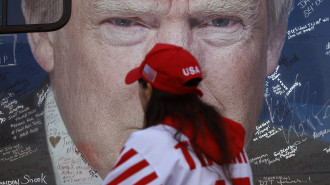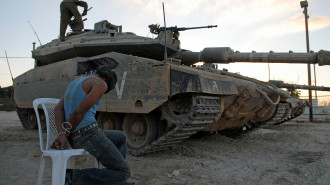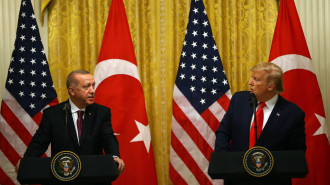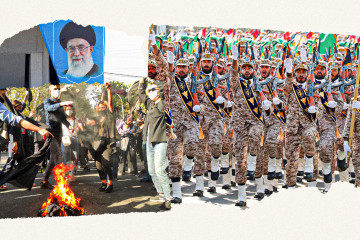
As Iran doubles down on hijab laws, women fight back

Many women in Iran are continuing to defy the country's mandatory headscarf rules amid the resumption of patrols by the government’s controversial ‘morality police’ following their temporary suspension after the death of Jina ‘Mahsa’ Amini last September.
The young Kurdish woman’s death in police custody – after being detained for wearing her hijab improperly - triggered months of nationwide protests during which many female demonstrators took off and burned their headscarves, calling for the downfall of the country’s theocracy.
Street police patrols are tasked with enforcing compulsory veiling and the wearing of long, loose clothing, as required by Iranian law. Since the imposition of the hijab on women and girls in Iran in 1981, after Iran’s 1979 revolution, numerous women have voiced opposition to being coerced into wearing full-body coverings.
The Iranian government is today intensifying its crackdown to stop women from disobeying the hijab laws and is considering a draconian new bill on hijab-wearing.
"Now that the protests have subsided, and the international community has moved on, the government is cracking down"
The 70-article draft law, which was presented to parliament at the end of July, proposed unprecedentedly severe penalties for women who refuse to wear the veil, such as hefty fines, long jail terms (between 5 to 10 years), the confiscation of cars and communication devices, driving bans, deductions to wages and employment benefits, dismissal from work, and a prohibition on accessing banking services.
The proposed legislation, which is yet to be passed, envisions the use of surveillance cameras to monitor public spaces and identify women in breach of the Islamic dress code. Under the bill, businesses and public figures who violate the headscarf requirement would also face strict punitive measures, including bans on engagement in professional activities, flogging, and fines.
Gissou Nia, a human rights lawyer and board chair of the Iran Human Rights Documentation Center (IHRDC), emphasised that regardless of the new draft and the details of it to enforce the use of the hijab, the core of the problem is that the mandatory hijab law remains in place. “The bottom line is: the bedrock law that shouldn’t exist is still in place, and that has to be abolished. That’s it,” the human rights advocate told The New Arab.
Discussing the tougher stance taken by Iranian authorities toward unveiled women, Nia pointed out that with decreasing global attention to the situation inside the country since the mass demonstrations last year, and less international pressure, the Islamic government is prepared to go more “extreme”.
“Now that the protests have subsided, and the international community has moved on, the government is cracking down more hardly,” the lawyer remarked. She added that since the anti-regime protests sparked by Amini’s death, it has become “difficult to control” the large numbers of women openly rejecting the imposed veil.
Jasmin Ramsey, deputy director of the Center for Human Rights in Iran (CHRI), argued that the Iranian government's recent push to introduce stricter penalties for unveiled women underscores its “inability to independently enforce this oppressive and discriminatory regulation”.
The Islamic Republic keeps pressing for the forced use of the headscarf, which has long been a key symbol of Iran's clerical rule, adopting more and more oppressive methods of policing and punishing women and girls for not complying with the strict dress code.
|
|
Stifling tactics used against defiant female Iranians have been wide-ranging, from suspending or expelling them from universities and barring them from sitting final exams, to denying access to public services such as transport, banking, and medical treatment.
“Iranian women and girls have endured gender-based discrimination in both law and practice for decades. These new methods of policing women's bodies only make their lives tougher,” Ramsey told The New Arab.
A particularly troubling development is the use of mass surveillance technologies capable of identifying women not wearing their headscarves in vehicles and pedestrian areas. Between April and June, nearly one million women have received warning text messages from Iran’s police after being captured on camera without the hijab in their cars, based on an analysis of government data carried out by Amnesty International.
Police also sent over 133,000 texts ordering women to stop using their vehicles, confiscated 2,000 cars, and referred over 4,000 “repeat offenders” to the judiciary, according to Amnesty.
"It's noise to try to show that the government is still in charge of this issue when it's not. It's not working, there's a lot of pushback, women keep defying the rules"
Companies and businesses have been forced to shut down for not implementing compulsory head covering. There have also been some reports of sentences forcing women to undergo psychological treatment for refusing to comply with hijab rules.
The latest escalation in the clerical regime’s clampdown on women signals that authorities will go to any lengths when it comes to enforcing mandatory veiling in public. But conversely, it also appears to indicate that the government is struggling to maintain hijab laws.
Barbara Slavin, a distinguished fellow at the Stimson Center with special expertise in Iran, described the regime’s hard push as part of a “psychological campaign” to “scare” women into compliance.
“It’s noise to try to show that the government is still in charge of this issue when it’s not,” the scholar told TNA. “It’s not working, there’s a lot of pushback, women keep defying the rules.” She said that mounting rejection of the hijab in Iran had been anticipated for a long time, having observed minimal veiling during her multiple visits to the country until 10 years ago.
With all the oppression in place now threatening to punish any Iranian female citizen disregarding headscarf obligations, there are still women and girls opting to show their hair in open defiance of one of the main pillars of the Islamic Republic.
Acts of civil disobedience have increased in Iran nearly a year since Jina ‘Mahsa’ Amini’s death. Several Iranian celebrities have joined the protest movement, among them athletes and actresses publishing photos of themselves without the hijab or appearing in public without covering their hair.
Although the demonstrations largely died down earlier this year following a heavy crackdown that killed 500 protesters and jailed almost 20,000, many women have continued to break the state’s forced-hijab regulations. Growing numbers of women and girls can be seen walking in Tehran and other cities with their hair uncovered, as well as in restaurants, cafes and while shopping.
Slavin thinks that continuous, quiet defiance is very likely to go on. “The more the regime tries to put women down, the more they find ways to rebel, [and] claim some new area [of freedom] for themselves,” the Iran specialist said, noting how the ongoing open anti-hijab protest is part of the wider struggle for women’s liberation.
|
|
While they fear reprisals by state security agencies for flouting the law amid the government’s ramped-up campaign of repression, Iranian women remain defiant and risk harassment, arrest, imprisonment or torture for exercising their right to choose what to wear.
Remarkably, even in the face of these cruel tactics and the risks of publicly challenging compulsory head covering, they are still taking a stand against the clerical establishment that has deprived them of their most basic rights, the hijab law being just one aspect of the injustice and oppression they have endured.
Women in Iran face discriminatory laws and barriers, including unequal rights to divorce, inheritance, and child custody, requiring their husband’s permission to get a passport and travel, a lack of effective anti-harassment laws, and restrictions on access to the job market.
“This law is only a small piece of a much broader framework of gender-discriminatory laws in Iran that haven’t gone away,” Nia said. “There absolutely needs to be a change.”
Alessandra Bajec is a freelance journalist currently based in Tunis.
Follow her on Twitter: @AlessandraBajec

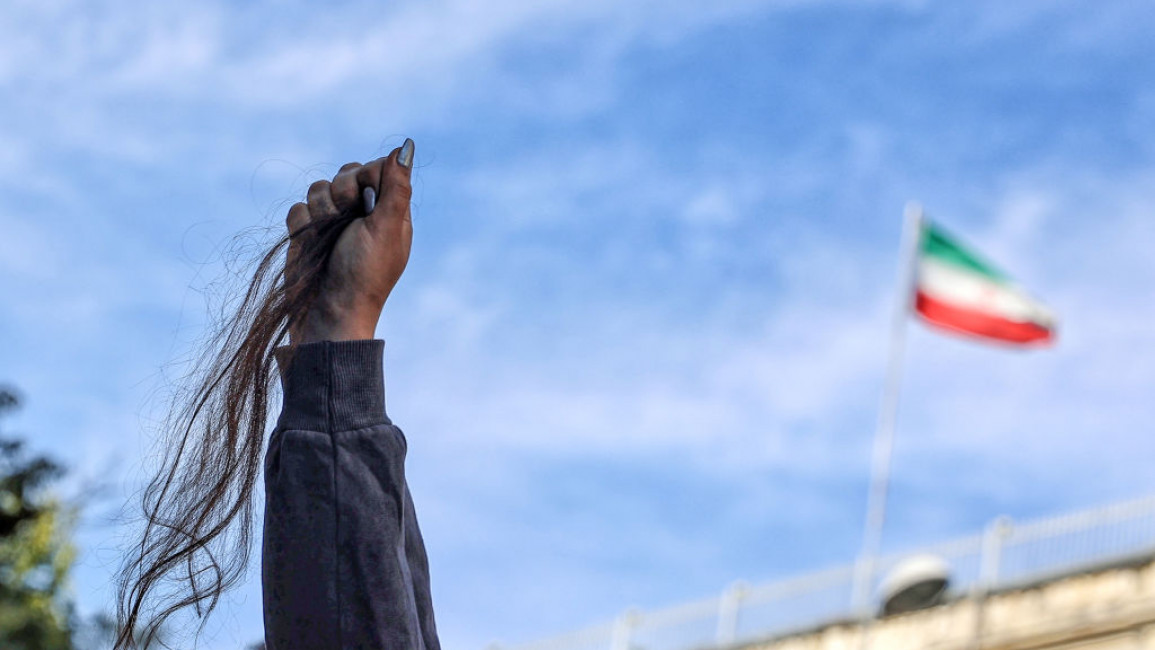






 Follow the Middle East's top stories in English at The New Arab on Google News
Follow the Middle East's top stories in English at The New Arab on Google News
